Saturday 2nd April 2016
Had we postponed this walk by twenty-four hours, it would’ve been precisely six-months since our last coastal walk; once again, following the unofficial Somerset Coast Path.
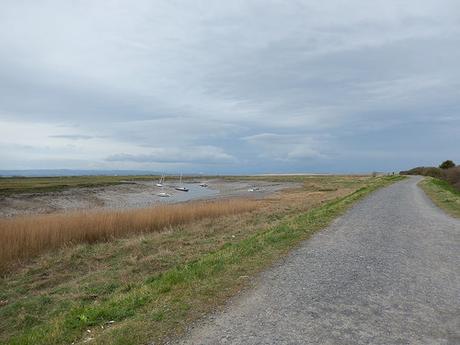
Our last walk ended at Apex Park, to the south of Burnham-on-Sea. We would resume from there, attempting a moderate distance (less than ten-miles) to ease our way back in to it.
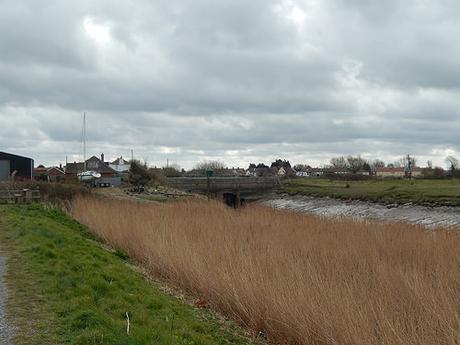
We immediately picked up the trail running along the northern bank of the River Brue, walking inland towards the A38.
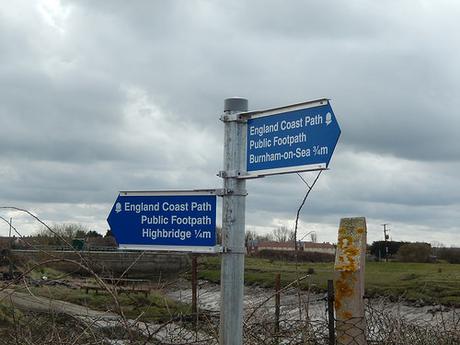
We were soon over the other side of the river, thanks to a bridge. As we prepared to squeeze down narrow back alleys with litter surrounding our feet, we could look up and admire the newly-installed signs, designating this route as part of the recently-opened England Coast Path.
At present, the England Coast Path is complete between Minehead and Brean Down (I believe another section has also been finished in Northumberland, or somewhere far up north). I can’t imagine they’ve had to do much else beyond installing signage thus far but, along with other coastal walkers who know Somerset too well, I do look forward to the day when we can walk from Brean to Weston and then Weston-super-Mare to Clevedon, without having to trespass or walk miles inland and follow tarmac.
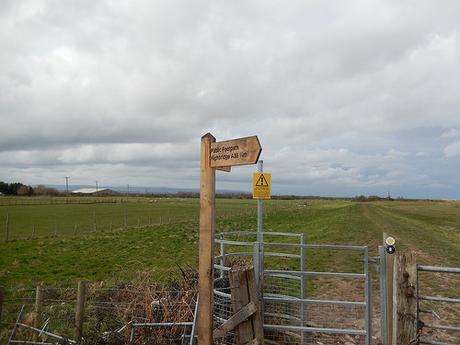
I wonder how many coastal walkers will feel inclined to re-walk sections of the country, once the entire route is complete in 2020?

We were now following the southern bank of the River Brue and heading west, towards the coastline once more.
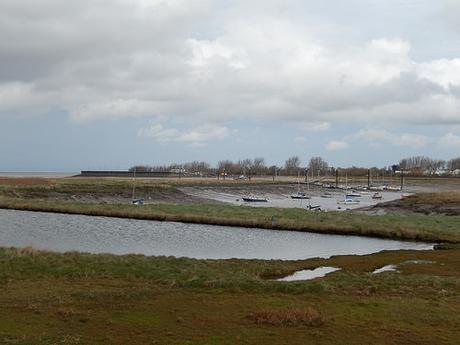
Behind us and beyond the boats moored amongst the mud, we could see the sea wall of Burnham-on-Sea.
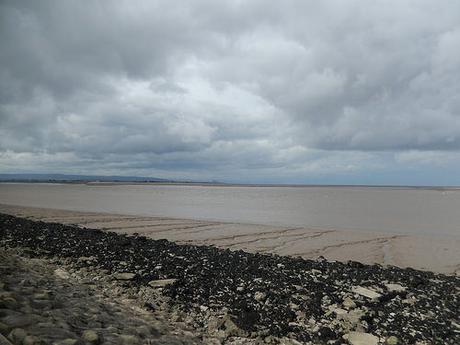
Ahead, the path to come would reveal new territory for both of us.
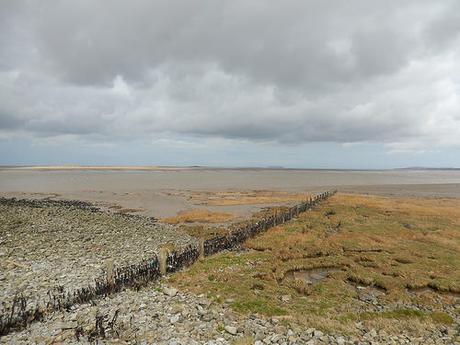
As tiny Stert Island came in to view ahead of us, our walk would turn inwards immediately, now following the eastern banks of the River Parrett.
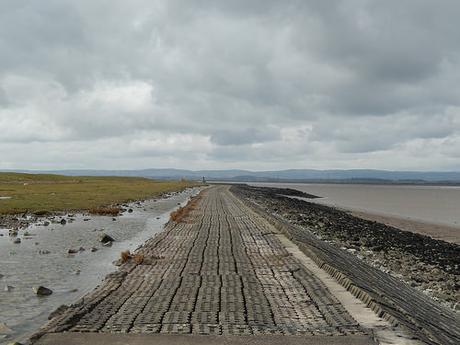
To my knowledge, the River Parrett Trail has been established for some time and continues much deeper and further south in to Somerset than we were prepared to walk. Incorporating it in to the national coast path must’ve been quite straight forward.

We passed this odd sealed structure on our left, which appeared to have a flue or chimney sprouting from its top. A secret underground bunker or disused station of some form?
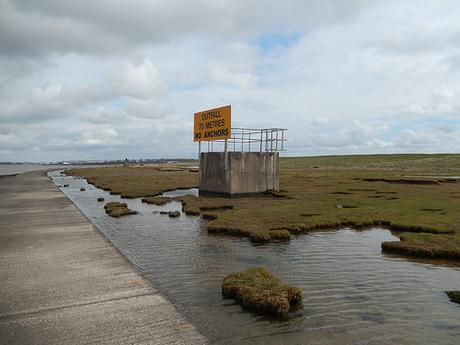
Then we passed this larger structure. Unable to make total sense of the warning sign, I noticed there was a ladder leading to the top. Hopping across the water (much like that weather man used to on GMTV in the early 1990s…), I set off to investigate – only to find a reasonably-sized drain cover.
Sadly, there was no shaft leading fifty-metres below ground to an underground world…
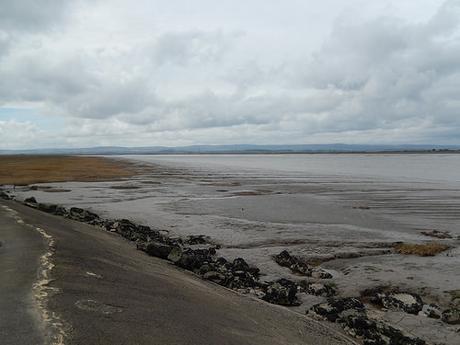
This stretch of walking was reminiscent of the short stretch of coast between Clevedon and Kingston Seymour (before you have to make a huge detour inland ahead of reaching Sand Point). Only, we weren’t look across the channel towards Wales but on to West Somerset and the miles of coastal walking to come.
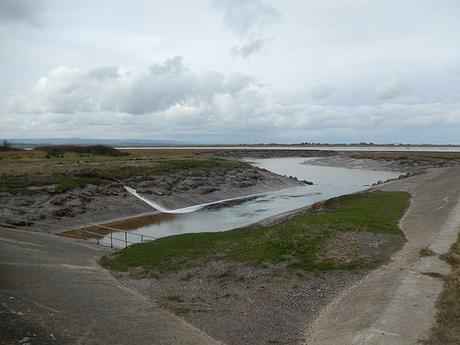
We then arrived at a sluice gate crossing, where something was being drained in to the end of Huntspill River.
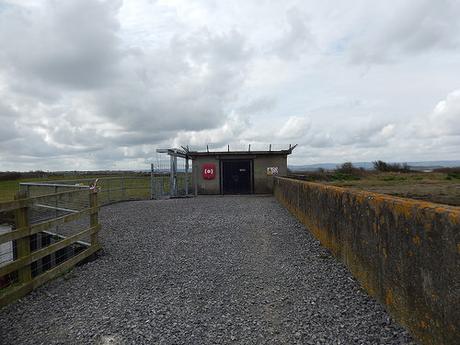
This was not the first sluice gate we’d encountered and apparently there will be others, further ahead. By far though, this was the most intimidating we had faced, surrounded by barbed wire only a cool and cloudy morning.
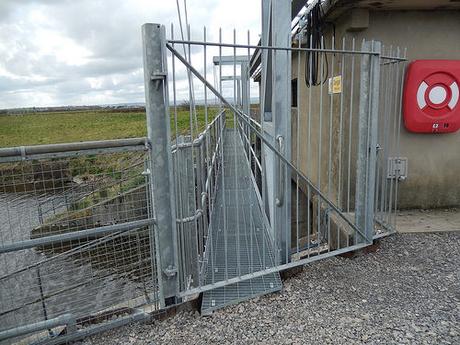
Our walk continued along a narrow walkway on the western face of the building. Unlike the sluice we crossed back in Hewish, we weren’t able to face a rather terrifying walk along a grated bridge.
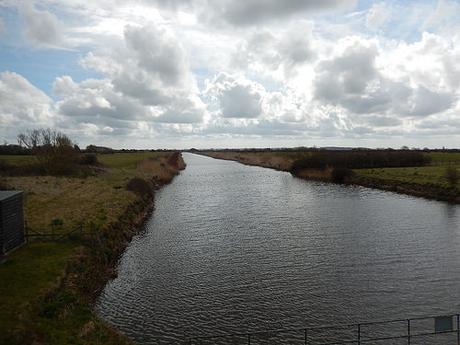
From here, Hunstpill appeared beautiful. It’s a shame, looking at my map, that there does not appear to be any permissive footpaths following its banks… There is a national nature reserve barely one-mile inland but, from what I’ve read, there is no right of way crossing that land.
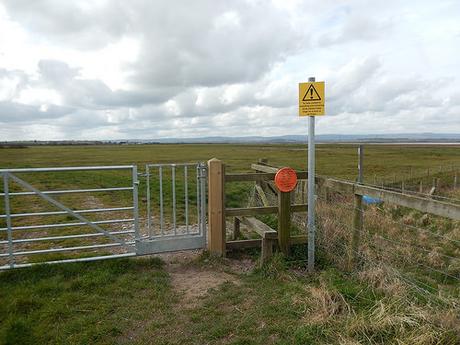
We then arrived at a scene which was recognisable from a photo in the book where, upon that orange bucket lid, the landowner has listed instructions to ring his mobile number (and not the fire department), if cows should be spotted stuck in the mud…
It wasn’t pleasant to be thinking of cows on their own at this time, let alone the addition of deep and sticky mud… Fortunately, we would encounter neither, as we soon sat down for a morning break.
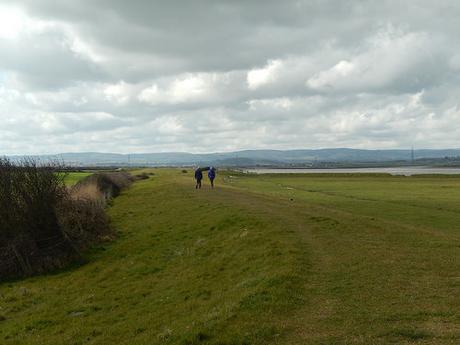
At this point, we were swiftly overtaken by a pair of other coastal walkers. I was amazed that they only had one tiny bag (maybe fifteen litres) between them, while Anna highlighted the fact that one man’s trousers appeared to be ‘afraid of his socks‘… I had thought about wearing gaiters on this day but if my trousers were so significantly short, I would have to at least wear long socks over the top.
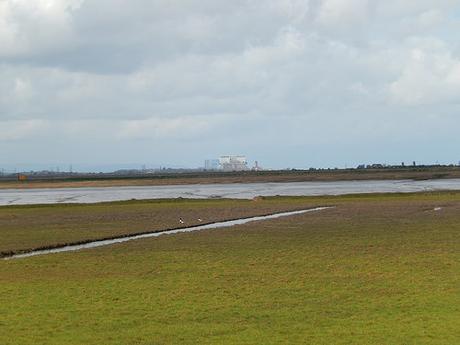
Along this walk, Hinkley Point would appear to shift closer with every mile we made. From this angle – quite possibly, the closest with which I have ever set foot upon the nuclear power station – it appeared as quite a haunting image.
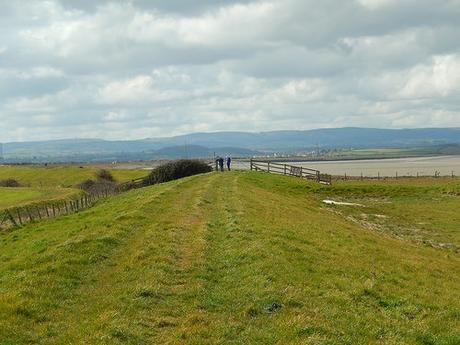
Continuing along a raised bank that was perhaps once a form of sea defence, we were walking towards the Quantock Hills.
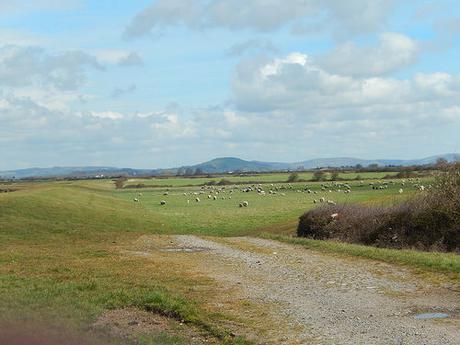
There’s an option presented within the book to turn inland near Black Rock Clyce and save approximately one and a half miles of riverside walking… As we would soon be walking several more miles along the opposite bank of the River Parrett and towards Stert Point, we decided to take advantage of this opportunity.
Despite feeling quite far from home at this point, Brent Knoll remained clearly visible to the north.

Where we were encountered blue and gray signs at the beginning of this walk, it was pleasing to discover later that wooden signs will continue in the more remote and less built-up areas.
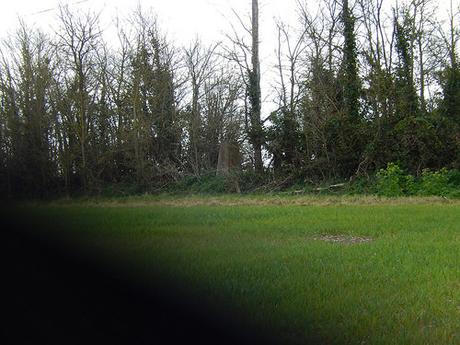
It was also at this point that my camera’s lens began to play up, for which I do apologize. At the top of one hill, we spotted this trig point, partially concealed inside a hedge. It’s one example of something that might’ve been removed and destroyed in another part of the country. I do like the fact that so many are still visible, if ever frequently in use.
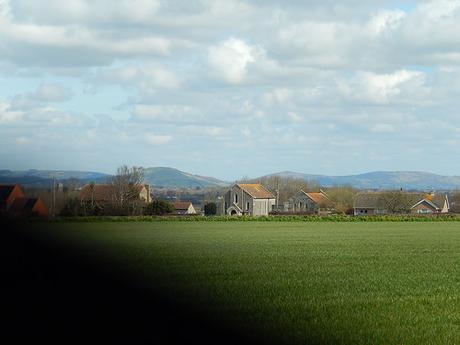
Now at the top of Pawlett Hill, we were both impressed with the views beyond Stretcholt, Huntspill and on to the mighty Mendip Hills. We felt so close to sea level that we were surprised by just how good these views were.
It was about this point, after the sun had broken through the clouds, that we chanced upon a bench, at the roadside and in one of the must unlikely of places to find a seat, facing a hedge directly opposite. It’s a slight shame that there doesn’t appear to be any seating along the coast path of River Parrett thus far. I feel I could quite happily give my time to making benches for such areas, if only the material costs were covered.
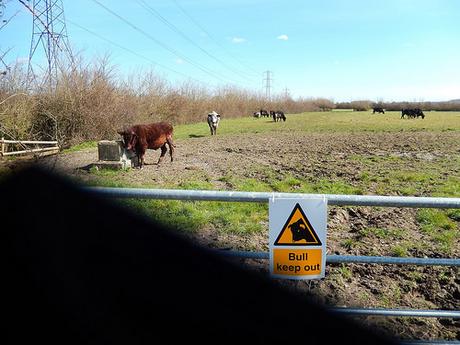
We were grateful to be passing right by this field continuing at least one bull as we marched on to rejoin our coastal-river walk at Pawlett Reach, beside Brickyard Farm.
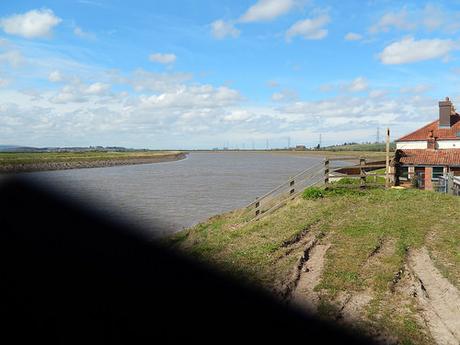
Suddenly, the River Parrett looked more like what you might expect.
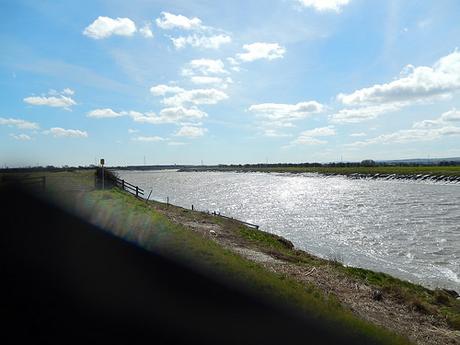
Fast-moving water with evidence, further along, that the river may have burst its banks amidst the heavy rainfall of the winter.
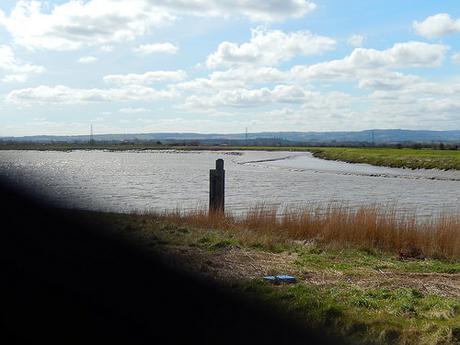
We passed another strange structure at the riverside. This time, made from wood. Perhaps used by boats for mooring?
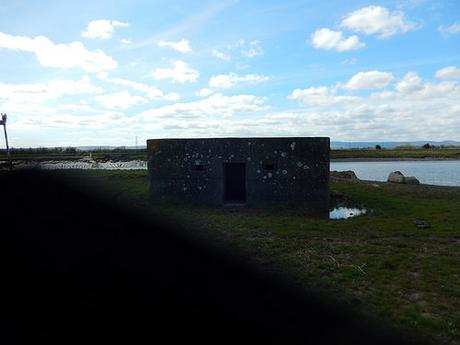
Then, there was a pillbox and we would come to pass another one, further ahead. I took the opportunity to explore the inside – even though the entrance was barely four-feet high and I’m a little over six-foot!
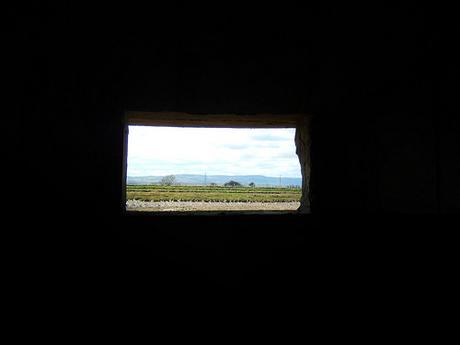
Height increased by a few inches on the inside, with narrowing views south to the Quantocks.
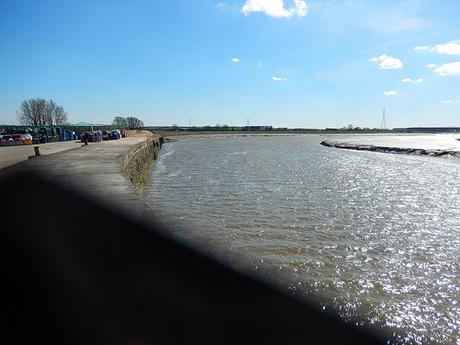
With the wind of the motorway traffic growing slightly louder, we left the countryside behind to continue on through the industrial estate at Dunball Wharf. At the same time, those two man who’d overtaken us earlier were about the repeat the same feat, having presumably walked the extra couple of miles of the river path that we avoided.
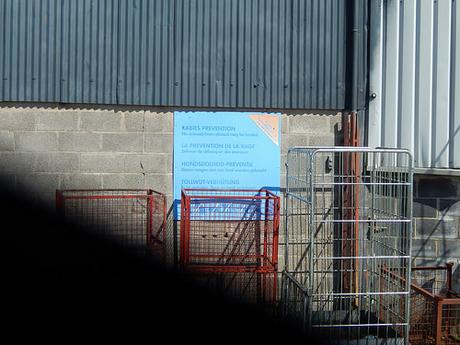
It was quite, there were mountains of rubber tyres, wheels, bins… And then, this sign warning us about rabies!!
Yet, we were still a few miles north of Bridgwater…
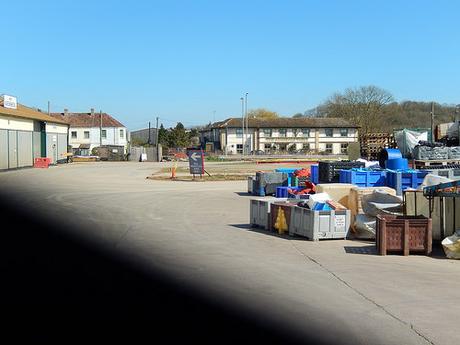
Soon enough, we made our way carefully across the A38 and to my car parked at the Admiral’s Table.
From here and, on our next walk; we’ll be following the A38 south for a good two-miles… It’s unfortunate but, unless I’ve missed something, there doesn’t appear to be another option, as far as (legally) walking the coastline goes.
Nine miles in four hours was not at all bad, for our first joint effort in almost six-months.
